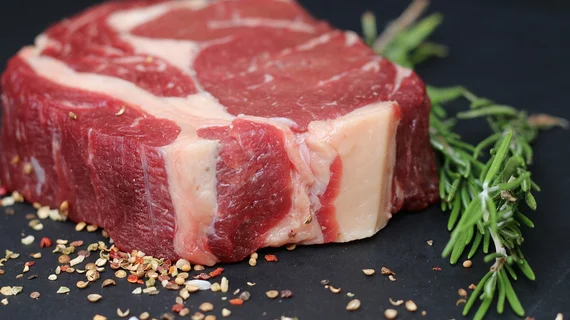Australian researchers have uncovered yet another link between the controversial Paleolithic diet and heart disease.
In the first major study of its kind, researcher Angela Genoni and her team at Edith Cowan University in Joondalup, Australia, studied the impact of gut bacteria on 44 people following the “caveman” diet and 47 following a traditional Australian diet. The Paleo diet centers around meat, vegetables, nuts and limited fruit and advocates cutting grains, legumes, dairy, salt, refined sugar and processed oils.
“The elimination of grains, dairy and legume protein sources means Paleo diets are rich in animal-based protein, which may increase serum trimethylamine-N-oxide (TMAO) concentrations,” Genoni and colleagues wrote in the European Journal of Nutrition, where they published their findings this month. “TMAO has been associated with CVD and atheroslerotic plaque in both animal and human models, however there is little evidence around how TMAO concentrations vary with total dietary patterns in healthy individuals.”
Since TMAO is produced in the colon, the authors explained, dietary shifts that translate to alterations in a person’s gut microbiome could potentially change concentrations of circulating TMAO.
The researchers grouped dieters according to their adherence to the Paleo diet—22 were labeled as Strict Paleolithic (SP) and 22 were deemed Pseudo-Paleolithic (PP). The team found intake of resistant starches was lower in both Paleolithic groups compared to controls (2.62 g/day in SPs, 1.26 g/day in PPs and 4.48 g/day in controls), pointing to a lack of whole grains in the Paleo diet as the reason behind followers’ significantly elevated TMAO levels.
“The rationale to exclude whole grains is not supported by data presented here, being inversely associated with body weight and TMAO concentrations,” Genoni et al. wrote. “Despite the maintenance of SCFA excretion and stool frequency and form, the differences noted in microbiota composition associated with the high fat and low carbohydrate intake may not be beneficial for long-term health.”
Genoni and colleagues also found higher concentrations of the bacteria that produces TMAO in Paleo patients.
“The Paleo diet excludes all grains and we know that whole grains are a fantastic source of resistant starch and many other fermentable fibers that are vital to the health of your gut microbiome,” Genoni said in a statement. “Additionally, the Paleo diet includes greater servings per day of red meat, which provides the precursor compounds to produce TMAO, and Paleo followers consumed twice the recommended level of saturated fats, which is cause for concern.”

